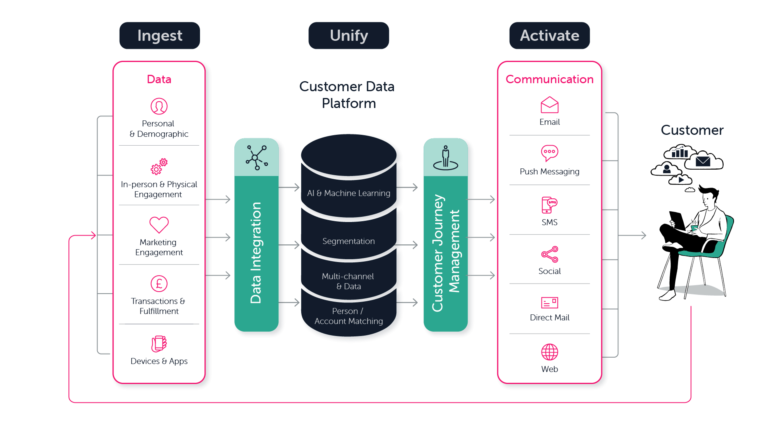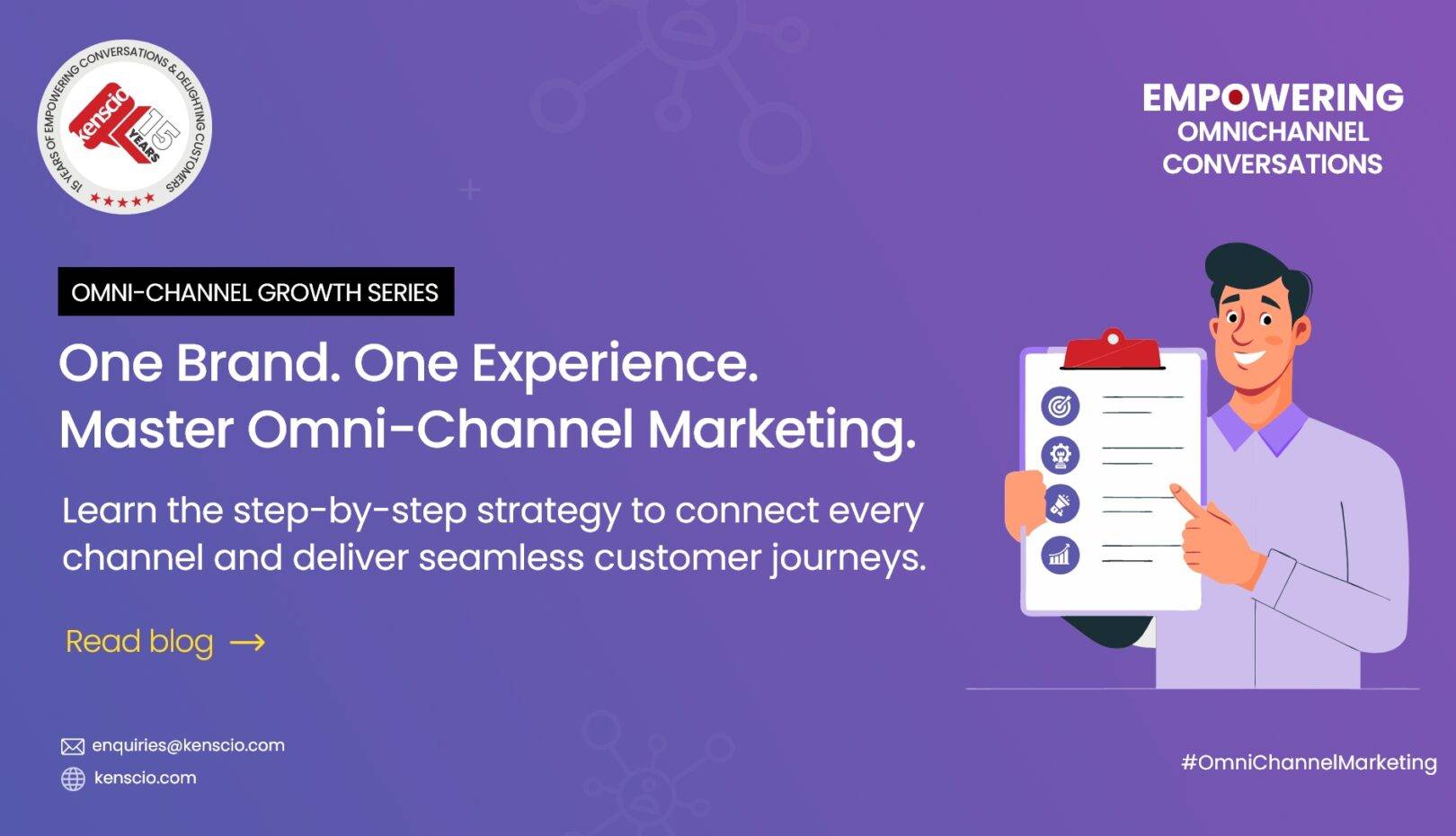- May 9, 2025
- by Parbeshkumar Maurya
Mastering Omni-Channel Strategy: A Step-by-Step Guide to Creating Seamless Customer Journeys | Omni-Channel Growth Series Blog 2
Let’s imagine a scenario: Sarah is shopping for a new pair of running shoes. She searches online and lands on a brand’s website. She browses a few models, adds one to her cart, but doesn’t check out. Later that evening, while scrolling Instagram, she sees an ad featuring the exact shoes she abandoned earlier, now with a limited-time discount. Intrigued, she clicks the ad but still doesn’t buy.
The next morning, Sarah receives an email reminding her of the shoes, along with customer reviews and an exclusive discount code. At lunchtime, she visits the store, where an associate—already aware of her online browsing history—offers to let her try them on in her size. She makes the purchase in-store, and later that night, she gets a personalized SMS thanking her, with recommendations for running socks that complement her new shoes.
Sarah’s experience wasn’t random; it was a perfectly executed Omni-Channel strategy—a journey where every platform, from the website to social media to physical stores, worked together to create a seamless customer experience.
Many businesses fail to connect these touchpoints effectively, leading to frustration, lost sales, and customer drop-offs. But those who get it right build brand loyalty, increase engagement, and drive higher conversions.
In this blog, we’ll walk you through how to build a winning Omni-Channel strategy step by step.
Step 1: Mapping the Customer Journey
Before implementing an Omni-Channel strategy, you need to understand your customers’ paths—from awareness to conversion. Customers don’t move in a straight line anymore; they zigzag between multiple touchpoints before making a purchase.
Imagine a furniture brand analyzing their customer journey:
- A customer discovers their brand through an Instagram ad.
- They visit the website to browse options, adding a few items to their cart but leaving without purchasing.
- They later receive an email reminder with a 10% discount on the items they viewed.
- When they open the email, the brand triggers a personalized SMS offering free shipping if they purchase within 24 hours.
- Finally, they walk into a physical store, where their browsing history is accessible to sales associates, who guide them to similar options and finalize the sale.
Mapping this journey allows brands to eliminate friction, optimize touchpoints, and guide customers effortlessly toward conversion.
Step 2: Creating a Unified Customer Data Ecosystem
Data is the backbone of a successful Omni-Channel strategy. Without it, interactions remain fragmented.
Take Starbucks as an example. Their loyalty app isn’t just a rewards program—it’s an integrated data hub. Every time a customer orders through the app, visits a store, or receives an email, Starbucks collects insights on their preferences, order history, and behavior. This allows them to:
- Send targeted promotions based on past purchases.
- Synchronize experiences across devices (mobile orders update in-store systems instantly).
- Create a seamless payment experience (customers pay via the app, earn rewards, and redeem offers in one ecosystem).
To implement this successfully, businesses need a Customer Data Platform (CDP) that:
✅ Collects data from website, mobile apps, social media, and stores.
✅ Uses AI to analyze behavior and predict customer intent.
✅ Integrates with CRM, email, and ad platforms to ensure consistent messaging.
Without a unified data system, Omni-Channel efforts remain disconnected and ineffective.

Step 3: Delivering Consistent and Personalized Messaging
Now that you have customer data, how do you use it? The key is delivering the right message, at the right time, through the right channel.
For example, Nike ensures that every interaction—whether through email, app notifications, or social media—feels consistent. A customer who browses running gear on the Nike website will see:
- A personalized email featuring similar products.
- A social media ad promoting an upcoming sale on running shoes.
- A mobile push notification with a store locator to try them on.
Brands can achieve this by:
✅ Using AI to segment customers and tailor campaigns.
✅ Implementing automated workflows that trigger messages based on behavior.
✅ Ensuring all channels follow the same branding, tone, and promotions.
Consistency builds trust and keeps customers engaged across multiple platforms.
Step 4: Integrating Online and Offline Experiences
One of the most powerful aspects of Omni-Channel marketing is blending digital and physical interactions.
Consider Apple’s retail experience:
- Customers can book a Genius Bar appointment online, syncing their preferences with in-store teams.
- iPads in-store show personalized product recommendations based on past purchases.
- Receipts and post-purchase support sync automatically across email and the Apple Store app.
By integrating digital tools with physical locations, brands increase engagement, convenience, and customer satisfaction.
Businesses can replicate this by:
✅ Using QR codes in-store to link to online catalogs and promotions.
✅ Equipping sales teams with tablets to access customer browsing history.
✅ Offering click-and-collect options, where online orders can be picked up in physical stores.
Step 5: Measuring and Optimizing Performance
The final step in mastering Omni-Channel is continuous optimization. What’s working? What’s not? Brands must track, analyze, and refine their strategy based on real data.
Key Metrics to Track:
- Cross-Channel Conversion Rates – How often do customers switch between platforms before purchasing?
- Customer Lifetime Value (CLV) – Are repeat customers engaging across multiple channels?
- Engagement Rate by Platform – Which channels drive the most interactions?
Example: Coca-Cola’s AI-Powered Analytics
Coca-Cola monitors real-time customer interactions across vending machines, mobile apps, and stores. If sales in a specific region drop, their AI adjusts marketing efforts instantly to drive engagement.
By analyzing data and optimizing touchpoints, brands maximize ROI and customer satisfaction.
Conclusion: Building an Omni-Channel Experience That Converts
A well-executed Omni-Channel strategy isn’t about being everywhere—it’s about being everywhere seamlessly.
What Businesses Must Do Next:
✅ Map the customer journey to eliminate friction.
✅ Integrate data across platforms to personalize experiences.
✅ Ensure consistent messaging across all touchpoints.
✅ Bridge the gap between online and offline interactions.
✅ Track key performance metrics to optimize results.
Is your brand ready to master Omni-Channel marketing?
